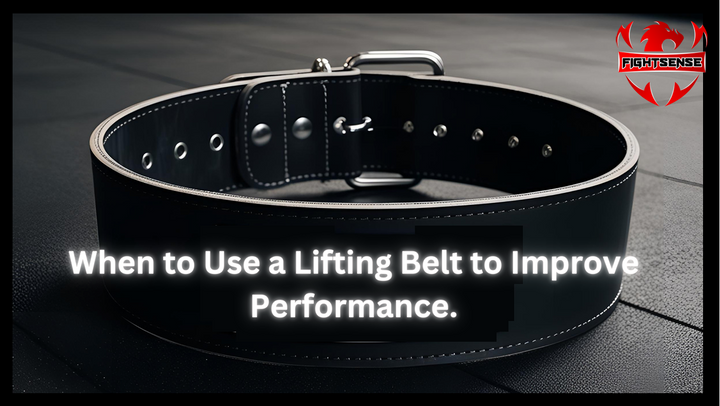When to Use a Lifting Belt to Improve Performance
18th Mar 2025
You’re not alone if you’ve ever wondered when to use a lifting belt at the gym. Many lifters question if they need one and when it’s appropriate to wear it.
Knowing when to use a lifting belt can help protect your back, improve form, and boost strength gains. This guide covers what a lifting belt is, how to use it, its benefits, and when to include it in your workout routine.
Key Highlights
-
Discover when you should support your lower back with a lifting belt.
-
Analyze the benefits and drawbacks of donning a lifting belt.
-
Look at correct belt placement and application techniques.
-
Find out who should and shouldn't be using a lifting belt.
What Is a Lifting Belt?
A lifting belt is a supporting piece of gym equipment meant to brace the core and spine during large lifts. Usually composed of leather or nylon, it wraps around your waist and offers outside pressure to support intra-abdominal pressure maintenance.
When to Use a Lifting Belt in the Gym
The main concern is: When should one really put on that belt? These are the main times when wearing a lifting belt makes sense.
1. During either a maximal or near-maximal lift
- Deadlifts, heavy squats, or overhead presses over eighty percent of your one-rep maximum.
- When large weights call for additional stability of the spine.
2. For Strength Gains: Lifting
- Programs in powerlifting and strength training emphasizing maximum effort lifts.
- Helps keep form while lifting really large weights.
3. Should Past Lower Back Problems Exist
- Provides much more protection when the lower back is weak.
- But see a professional before depending on a belt.
4. Regarding Advanced Lifters
- Those who already have solid core muscles and know bracing techniques.
- Before donning a belt, beginners should concentrate on building core strength.
Where and How to Use a Lifting Belt Properly
Where Should I Wear It?
-
Around your midsection, cover your lower back and abdomen.
-
Above your hip bones but below your ribcage.
How To Make Use Of It
-
Before you tighten the belt, brace your core.
-
Fasten it tight enough to support but free enough to breathe.
-
Use it just for designated hard lifts; it is not for whole workouts.
Advantages of Using a Lifting Belt
-
Raises intra-abdominal pressure, therefore stabilizing the spine.
-
Lowers the likelihood of lower back problems with big lifts.
-
Enhances lifting performance, thereby enabling you to raise greater weight.
-
Under heavy load, promotes improved body mechanics and form.
Mistakes to Avoid When Using a Lifting Belt
-
There is nothing supporting loose belts. Too tight can limit mobility and respiration.
-
Applying it to every kind of activity.
-
Lesser lifts and isolated drills don't call for it.
-
Ignoring basic bracing methods.
-
Before tightening the belt, always first work your core muscles.
-
Skipping the warm-ups.
-
A belt cannot substitute the requirement of a suitable warm-up.
Shop Now !
Conclusion
In your strength training, knowing when to wear a lifting belt might alter everything. It protects your back, gives necessary support during large lifts, and may improve performance. Recall, though, it's not a magic bullet.
Maximizing this gym item depends mostly on good technique, core strength, and knowledge of when a belt is suitable.
Disclaimer
This page serves only for informative needs. Before changing your exercise program or utilizing a lifting belt, always speak with a qualified fitness professional or healthcare provider.
FAQ:
-
Shoulder innovators wear a lifting belt?
No, before thinking about a belt, novices should concentrate on developing core strength and mastering correct lifting techniques.
-
Could I use a lifting belt for every exercise?
Not at all. Only big compound lifts like squats, deadlifts, and overhead presses should a lifting belt be advised for. Neither isolated exercises nor cardio call for it.
-
The lifting belt should be tightened just how tightly?
It should be just right to give support without limiting your breathing.
-
Using a lifting belt will help me to raise greater weight.
Indeed, because of better core stability and intra-abdominal pressure, many lifters can manage heavier weight when wearing a belt.

